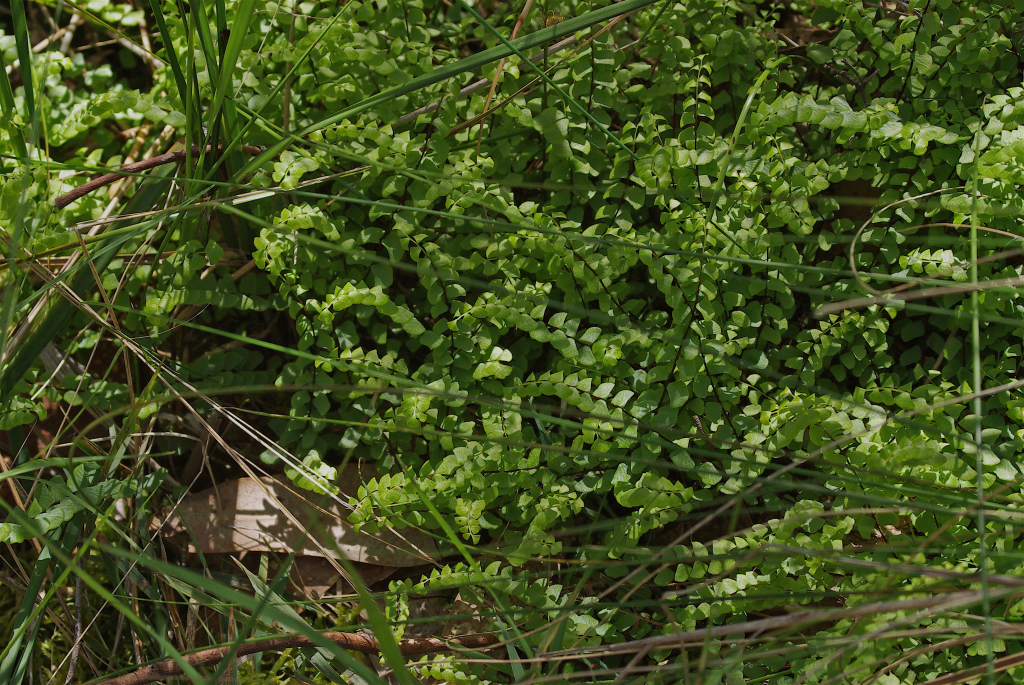Lindsaea linearis
Sw. Screw FernRhizome creeping, often deeply buried, covered with coarse, pale brown, narrow scales having long hair-points. Fronds close together or distant, unbranched (very rarely bifid), 10–40 cm long, dimorphic with fertile fronds erect and longer than the more spreading sterile fronds. Stipe length variable, 5–25 cm long in sterile fronds, slender, brittle, red-brown to almost black, shiny. Lamina linear, once pinnate, glabrous. Pinnules shortly stalked, asymmetrically wedge-shaped to fan-shaped, up to 1 cm wide, usually wider than long; outer margin wavy, crenulate, toothed or lobed; veins radiating out from base; pinnules in fertile fronds obliquely deflexed. Sori extending along outer margin, protected by membranous indusium with frilled margin.
Wim, GleP, VVP, VRiv, GipP, OtP, WaP, Gold, CVU, GGr, DunT, EGL, EGU, WPro, HSF, HNF, OtR, Strz, MonT, HFE, VAlp. All States, Norfolk Is. New Zealand, New Caledonia. Relatively common in open-forest, scrubs and heathland south of the Great Dividing Range, particularly on poorly drained soils of low nutrient status.
Fertile fronds stand erect and with their twisted, deflexed pinnae resemble a wood-screw in silhouette. Sterile fronds can be almost prostrate and hidden among herbage. When sterile, L. linearis is superficially similar to Asplenium flabellifolium (Aspleniaceae), but the fronds are shorter and less tapering.
Entwisle, T.J. (1994). Ferns and allied plants (Psilophyta, Lycopodiophyta, Polypodiophyta). In: Walsh, N.G.; Entwisle, T.J., Flora of Victoria Vol. 2, Ferns and Allied Plants, Conifers and Monocotyledons, pp. 13–111. Inkata Press, Melbourne.
 Spinning
Spinning




